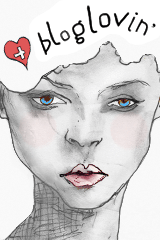I went to see a marvellous exhibition today. It's theme was the traditional Chinese art of batik (or tie-dye). I was more than inspired by the rich blue fabrics with the intricate patterns and motifs in white. I was once again assured that the Chinese is and has always been a step ahead of any other civilization. Maybe it is just my "sino-centrism", but I am so damn proud of the Chinese and everything they've managed.
_
Long ago, the Chinese often used a kind of blue and white colored hand-woven cloth in their daily lives. Although this cloth is simple in craftsmanship and dyed with pure natural pigments, it distinguishes itself visually with its sensational beauty and with its decorative pattern changes. According to historical documents, this traditional hand-woven cloth has more than a 2000 year-old history. The remains of these fabrics have been unearthed on the color plastics on the Bodhisattva sculptures in the ancient Dun Huang caves. The earliest unearthed relics can be traced back to the 4th century AD. They have been indentified as a kind of material that was printed and dyed in an ancient Chinese folk style. This craft spread widely over China and was very popular in the Tang Dynasty. This traditional handcrafted technique survived in different parts of China each with different modes of production. These can be subdivided into three kinds as a result of the different printing and dyeing process: bandhnu, batiks and blue print.
Currently in China, all of the three crafts have been listed on the state-level Intangible Cultural Heritage List and have received national recognition. They have been put under state protection as living cultural relics.
_
Bandhnu
This type is specifically ascribed to the Bai ethnic group in Yunnan Province of China. The usual bandhnu method starts with drawing of the outline of the design on the cloth, followed by needling the cloth together to create the "flower" pattern by a variety of folding, bundling, pinching, twisting, stitching, winding, knotting, clipping etc, so that the cloth is tied in various shapes. The knotted cloth is then dyed by being soaked repeatedly in the pigment solution. Due to the different density of the ties, the fabric absorbs the pigment at different intensity levels. After the knot is untied, the cloth appears to have different shades, rich in color layers.
_
Batiks
The production process is comprised of using beeswax and paraffin wax and drawing the patterns with a melted wax liquid and a hand-tailored wax knife or a sharpened bamboo stick on the cloth and the dipping it into the indigo blue dye solution. The part of the cloth without the wax becomes dyed blue. The cloth is then put into boiling water that removes the wax and enables the blue and white design to appear. Due to the wax cracks that naturally occur after the wax solidifies and in the process of soaking and dyeing, the patterns will be full of natural cracks.
_
Blue Printed Calico
This type of craft uses soybean powder and lime mixture as the protecting agent, and uses hollow carved patterns as the printing plate. To imprint the pattern on the cloth, the dyer puts the carved pattern frames on the cloth and then plasters the soybean and lime mixture into the cloth into the hollowed sections of the carved patterns. This forms white patterns on the cloth that the pigment is unable to penetrate. The cloth is then dried and submerged into the indigo solution. After wind-drying and the dried paste being scraped off, a bright blue and white calico pattern emerges.
_














No comments:
Post a Comment